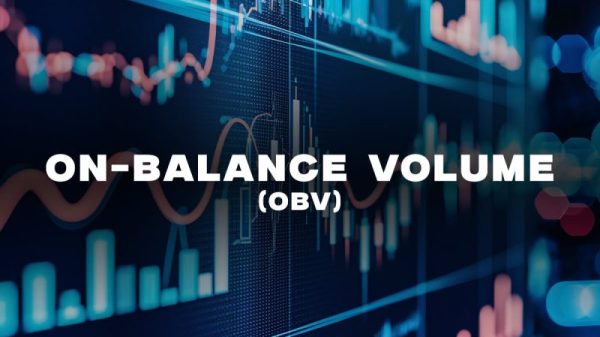How to best invest in silver is a thought on many investors’ minds.
Silver has long been an attractive vehicle not only for storing wealth, but for generating it too. Silver bugs rave about the growth opportunities to be had in a price rally.
However, what goes up must come down, and the silver market is prone to deep dives. This has much to do with the silver’s dual role as both a precious and industrial metal.
As with gold investing, there are four major routes to incorporating silver into your investment portfolio: physical silver, silver ETFs, silver stocks and silver futures. Let’s take a brief look at each one.
How to invest in physical silver?
The most direct avenue to investing in physical silver is by purchasing bullion products such as silver bars, silver coins and silver rounds. Physical silver can be bought via mints and bullion exchanges for immediate delivery.
As a tangible asset, silver bullion has inherent and real value, although as with other commodities it is also vulnerable to market fluctuations. Like gold, silver has been used as legal tender for centuries.
Today, the most popular silver bullion coins include the American Silver Eagle, the official investment-grade silver bullion coin of the United States Mint; the Canadian Silver Maple Leaf, produced by the Royal Canadian Mint; and the Australian Silver Kangaroo, out of the Perth Mint.
For those investors interested in holding silver bars, a dedicated storage vault in a secure storage facility is a necessity. However, it’s important to understand that there are associated costs with secure storage. Another expense associated with investing in physical silver is the premium charged on top of the silver spot price to cover minting costs.
Click here to learn more about the pros and cons of investing in physical silver.
How to invest in silver futures?
Silver futures are traded on a number of global exchanges, such as CME Group’s COMEX exchange, the Dubai Gold & Commodities Exchange (DGCX), and the Tokyo Commodity Exchange (TOCOM).
The silver futures market allows participants to enter into futures contracts for the delivery of the white metal in the future at an agreed-upon price. In such contracts, two positions can be taken: a long position to accept delivery of the metal or a short position to provide delivery of the metal.
However, the volatility inherent in the silver sector can be amplified in the futures marketplace. This makes it a realm for more experienced investors with a higher tolerance for risk.
Click here to learn more about investing in silver futures.
How to invest in silver stocks?
Investors can purchase shares in silver mining stocks on many of the world’s premiere stock exchanges. Buying a share essentially means buying a stake in the company, with financial returns or losses tied to its performance.
Canada’s Toronto Stock Exchange (TSX) and TSX Venture Exchange (TSXV) feature the most mining stocks of any of the world’s stock exchanges. The New York Stock Exchange (NYSE) and the Australian Stock Exchange (ASX) are also excellent platforms for mining investment.
Depending on risk tolerance and preferred investment strategy, investors can choose between a bevy of major silver mining companies with producing assets or junior silver miners. Many of the more mature silver mining stocks also pay dividends. Read our article on 5 Silver Stocks that Pay Dividends for a place to start.
It’s worth noting that investing in a junior stock can be risky. Since these companies can fail due to the risks associated with exploration and development, investors stand a greater chance of taking on a loss when getting exposure to silver this way.
Finally, another option for market participants is to purchase shares in silver streaming and royalty companies, such as Wheaton Precious Metals (TSX:WPM,NYSE:WPM). These companies are often viewed as a safer option when it comes to stocks.
Watch the interview above for Hansen’s thoughts on how to conduct due diligence for gold and silver stocks.
Click here for a list of the 5 biggest silver-mining companies, here for the 5 best-performing Canadian silver stocks, and here for the 5 biggest ASX silver stocks.
How to invest in silver ETFs?
If investors don’t want to take the risk of investing in individual stocks, they can also opt to invest in silver through an exchange-traded fund (ETF), which trades on an exchange like a regular stock.
There are several silver ETFs to choose from. For instance, some ETFs focus solely on resource companies in the space, some on physical silver bullion, and others on silver futures contracts. For those looking to gain exposure to a basket of silver mining stocks, the Global X Silver Miners ETF (ARCA:SIL) and IShares MSCI Global Silver Miners ETF (BATS:SLVP) are quality options.
The iShares Silver Trust (ARCA:SLV) is the world’s largest silver ETF by assets under management. It tracks the London Bullion Market Association silver price as its benchmark and holds silver bullion. The ProShares Ultra Silver ETF (ARCA:AGQ) uses derivatives such as futures contracts to invest in silver.
Click here for a list of the seven biggest silver ETFs.
Why invest in silver?
As a precious metal, silver can offer wealth protection in times of turmoil. When political and economic uncertainty are rife, legal tender generally takes a backseat to assets like gold and silver.
Recent concerns include the threat of a looming recession, social unrest, Russia’s entrenched war in Ukraine and the destabilization in the Middle East centered around the Israel-Hamas war. Investors will be closely watching these trends and any other geopolitical events that bring higher levels of uncertainty.
Like gold, the silver price often increases when geopolitical issues are at play. Yet, silver has the potential to offer higher returns than gold — the gold/silver ratio, which has moved between 1:75 and 1:95 since June 2022, is a metric that compares the metals’ prices at a given moment. Often, when gold moves up, silver will play catch up, and it stands to see a much bigger percentage gain when its price goes up.
With the highest electrical conductivity of all the metals, silver’s industrial side also offers opportunities for generating wealth. The major drivers of industrial demand for silver comes from sectors important to energy transition, specifically the production of photovoltaics and electric vehicles.
FAQs for investing in silver
Who is the biggest silver investor?
JPMorgan Chase (NYSE:JPM) is believed to hold the biggest position in physical silver through its custodianship of the iShares Silver Trust ETF (ARCA:SLV) and its significant COMEX silver bullion holdings. The financial services company’s majority position in the silver market has placed it in the center of silver market manipulation investigations in recent years.
Does Warren Buffett invest in silver?
Yes — despite his strong feelings against gold, Warren Buffet has reportedly invested nearly US$1 billion in silver. While the Oracle of Omaha sees no intrinsic value in gold, silver’s industrial and medical uses make it a good fit for his investment values.
What price did Warren Buffett pay for silver?
Buffett’s Berkshire Hathaway (NYSE:BRK.A,NYSE:BRK.B) took advantage of ultra-low silver prices between 1997 and 2006, buying up 37 percent of global silver supply. Silver ranged from US$4 to US$10 per ounce during that period.
In fact, between July 1997 and January 1998 alone, the company bought about 129 million ounces of the metal, much of which was for under US$5. Adjusted for inflation, the company’s purchases in that window cost about US$8.50 to US$11.50.
Securities Disclosure: I, Melissa Pistilli, hold no direct investment interest in any company mentioned in this article.





























